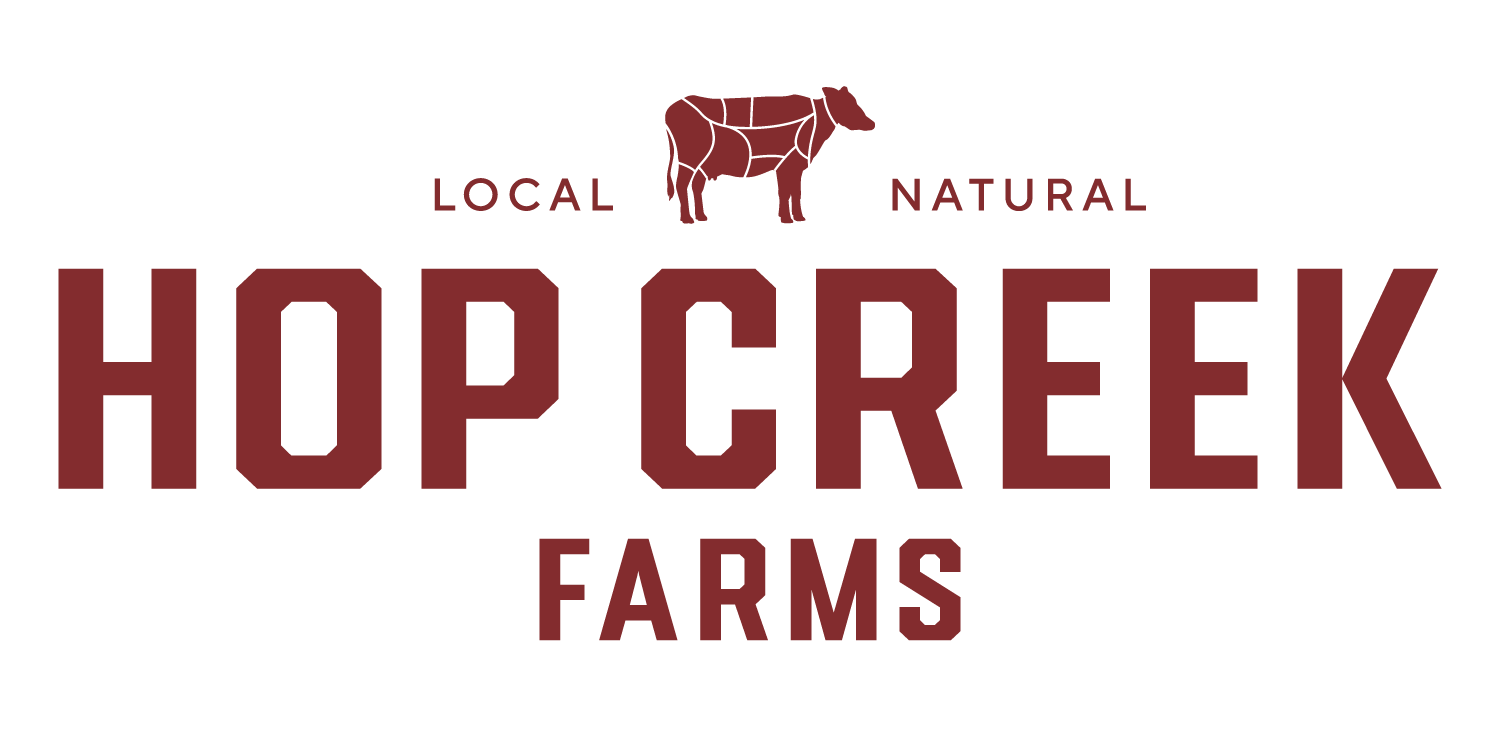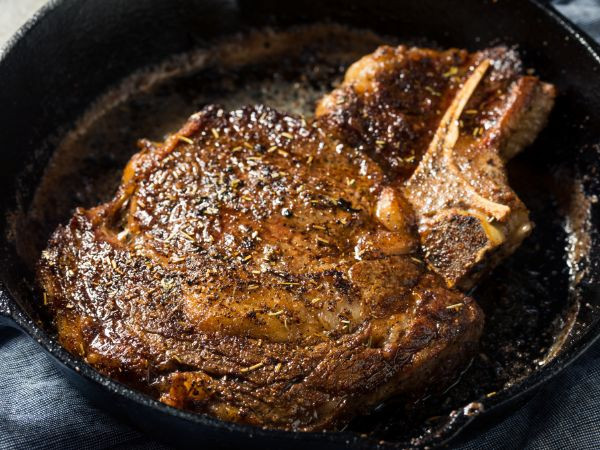Exploring Different Cooking Methods for Grass-Fed Steak
posted on
April 25, 2024

The Right Cooking Method Enhances the Flavour
Choosing the right cooking method is pivotal in enhancing the natural flavours of grass-fed beef, ensuring a perfectly cooked steak every time. Grass-fed beef, known for its distinct taste and texture, necessitates a different approach compared to grain-fed variants.
The art of a steak cooked hinges on employing techniques that complement its leaner profile yet maintain its juiciness and tenderness. Among various steak cooking methods, those that allow precise control over heat, such as the reverse sear or using a cast iron pan, stand out.
These methods not only ensure a deliciously crusty exterior but also allow the steak's interior to reach the ideal medium-rare steak temperature, effectively unlocking the steak’s full flavour potential.
Ultimately, the quest for the perfect steak culminates in a careful selection of cooking methods that honour grass-fed beef's unique characteristics.
Grilling
Grilling is a timeless and classic method of cooking grass-fed steak, celebrated for imparting a distinctive smoky flavour and achieving a beautifully charred exterior that steak aficionados adore. This technique involves cooking the steak over an open flame, whether a traditional charcoal grill or a modern gas grill, allowing the high heat to sear the meat quickly.
This searing locks in the juices, ensuring the steak remains succulent and tender on the inside while developing a crisp, caramelized crust on the outside. Monitoring the cooking time is crucial to avoid overcooking for grass-fed steak, which is typically leaner than its grain-fed counterpart. Depending on the steak's thickness and desired doneness, a few minutes per side is often sufficient.
Flipping the steak only once during grilling helps maintain a uniform char and prevents moisture loss. Additionally, allowing the steak to rest for a few minutes after grilling before serving helps redistribute the juices, ensuring every bite is as flavorful as possible.
Grilling grass-fed steak not only highlights its natural flavours but also adds an element of outdoor culinary adventure to the cooking experience.
Pan-Searing
Pan-searing grass-fed steak on the stovetop is a technique that offers chefs and home cooks alike the ability to craft a steak with a flavorful crust and a juicy, tender interior. The process involves cooking the steak in a very hot pan, traditionally cast iron, which is ideal for distributing heat evenly and maintaining high temperatures.
Cast iron pans also contribute to developing a deep, golden crust that elevates the flavour profile of the grass-fed steak. This method begins with patting the steak dry and seasoning it generously with salt and freshly ground black pepper, ensuring that these seasonings adhere to the surface to create a savoury crust.
The key to a successful pan-sear lies in allowing the pan to reach a high temperature before adding the steak, ensuring the meat sizzles upon contact. This initial sear locks in the steak's juices, enhancing its succulence. Once the steak is placed in the pan, it's crucial to resist the temptation to move it around, allowing it to sear undisturbed for a few minutes until it develops a rich, caramelized crust.
After flipping, the steak can be finished cooking to the desired level of doneness, often with the addition of butter, garlic, and fresh herbs to the pan to baste the steak, infusing it with additional layers of flavour. Resting the steak for several minutes after cooking is important to ensure the redistribution and retention of pan sauce, resulting in a tender steak that's moist and flavorful with every bite.
Pan-searing is particularly suited to thinner cuts of grass-fed steak, such as filet mignon or flat iron, which benefit from quick cooking at high temperatures.
Sous Vide Cooking
Sous vide cooking represents a revolutionary approach to preparing grass-fed steak, offering unparalleled precision in cooking temperatures that yield consistent and remarkable results every time. This method involves sealing the steak in a vacuum-sealed bag and then immersing it in a water bath at a specific, constant temperature.
The beauty of sous vide is its level of control over the cooking process, allowing the steak to cook evenly from edge to edge without the risk of overcooking. For grass-fed steak, which can easily become tough if exposed to high heat for too long, sous vide ensures that the meat remains tender, moist, and perfectly cooked to the desired level of doneness.
The process begins with seasoning the steak as desired and then placing it in a vacuum-sealed bag to remove all air, ensuring even cooking and preventing floating. The steak is then placed in the water bath, with the temperature set according to the steak's desired final internal temperature.
Cooking times can vary but generally range from 1 to 4 hours, offering the flexibility to achieve the perfect degree of tenderness without having to monitor the cooking process closely. Once the steak has reached its optimal temperature and tenderness, finishing it with a quick sear on a hot pan or grill can add that desirable crust and smoky flavour.
This final step further enhances the steak's texture and taste profile, bridging traditional and modern cooking techniques. With its meticulous temperature control, Sous vide cooking opens up a new world of culinary possibilities for grass-fed steak, ensuring a perfectly tender and flavorful outcome every single time.
Broiling
Broiling grass-fed steak is a quick and effective method to achieve a crispy, caramelized crust while keeping a tender and juicy steak. This cooking technique utilizes the broiler element of an oven to deliver high, direct heat from above, mimicking the effects of grilling but in an indoor setting.
Ideal for when outdoor grilling isn't an option, broiling allows for the high-temperature cooking needed to sear the steak rapidly, creating that deliciously charred exterior without overcooking the center.
To broil a grass-fed steak effectively, it's important to preheat the broiler and position the oven rack so the steak is just a few inches from the heat source—ensuring intense, direct heat. To enhance the searing effect, the steak should be patted dry and seasoned according to preference before being placed on a broiler pan or a preheated cast-iron skillet.
Halfway through, the steak must be flipped to ensure an even char on both sides. Given the leaner nature of grass-fed beef, monitoring the steak closely is critical to prevent it from drying out. Finishing touches, such as a brush of butter or a sprinkle of herbs, can be added after cooking, just before the steak rests to redistribute its juices.
Broiling is particularly suited to thinner cuts that can cook through more evenly under such intense heat, including flank or New York strip steaks.
Reverse Sear
The reverse sear method is paramount for grass-fed steak, especially when striving for a perfectly cooked interior and a crispy, golden exterior. This method flips the traditional searing technique on its head by starting the steak in a low-temperature oven and finishing it with a blazing hot sear on the stovetop or grill.
This approach is particularly suited for thicker cuts of steak, such as ribeye or thick-cut filet mignon, where achieving an even level of doneness throughout is essential.
To effectively reverse sear a grass-fed steak, begin by preheating the oven to a low temperature, typically between 225°F (107°C) to 275°F (135°C), to gently cook the steak to near-perfection from the inside out. Season the steak generously and place it on a rack over a baking sheet to ensure even airflow and cooking. Use a meat thermometer to monitor its internal temperature, aiming for a target that's 10-15°F (5-8°C) below your desired final temperature, as the steak will continue to cook during the searing process.
Once the steak reaches the target internal temperature, remove it from the oven and allow it to rest while heating a heavy skillet or pan over high heat. The final sear should be swift and high-heat, long enough to form a rich, caramelized crust on each side, enhancing the steak's flavour and texture. This step may take only a minute or two on each side, depending on the steak's thickness and the heat's intensity.
The reverse sear method offers precision in achieving the desired doneness. It elevates the steak's flavour by concentrating its natural sugars and fats through slow cooking, followed by a rapid, high-heat finish.
It's an exemplary technique for those seeking to master the art of cooking steak to perfection, combining the gentle cooking of sous vide with the traditional appeal of a seared crust.
Experiment with Different Techniques
Experimenting with different cooking techniques not only broadens your culinary skills but also injects an element of fun and creativity into meal preparation.
Whether you're a seasoned chef or a home cook looking to elevate your dishes, trying new methods such as sous vide, broiling, or reverse searing can transform your grass-fed beef, lamb, and pork into masterpieces of flavour and tenderness. Each technique offers a unique way to enhance the natural qualities of grass-fed meat, bringing out its rich, distinct taste.
At Hop Creek Farms, we invite you to challenge your cooking routine and discover the remarkable differences these techniques can make. Our high-quality, sustainably raised grass-fed beef selection is perfect for your culinary explorations. By experimenting with different cooking methods using our premium cuts, you enjoy delicious meals and support sustainable farming practices.
Get creative when you cook your steak! Shop Hop Creek Farms for the finest grass-fed beef for your culinary explorations.







